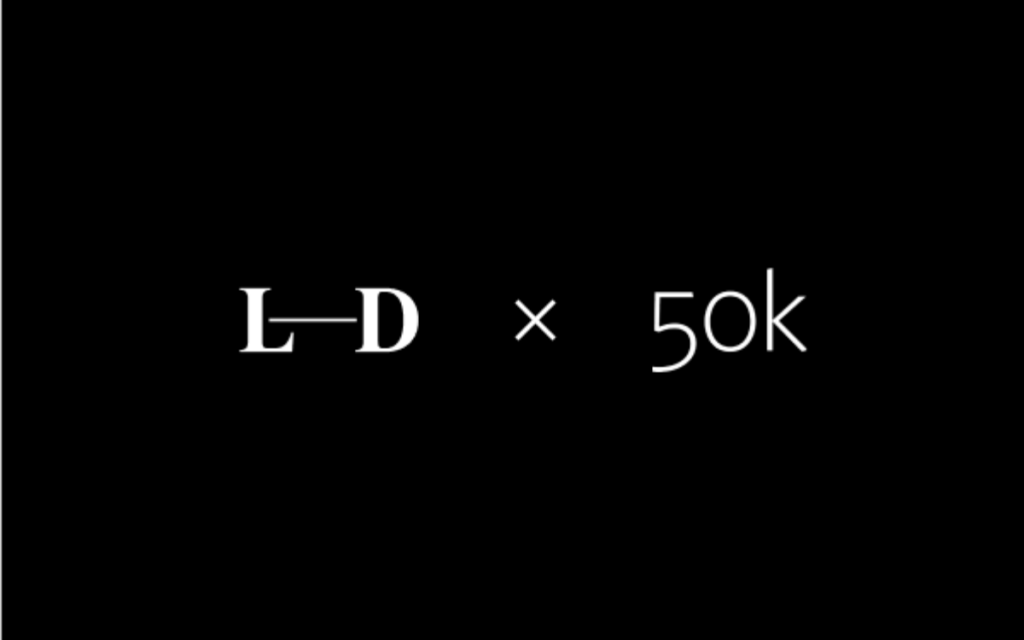Brands need to think like journalists
In this new post-programmatic era of marketing, brands should use a journalistic approach to unlock deeper connections with their audiences.
Aaron Morrissey is an editorial director at Long Dash. He was previously the editor-in-chief of DCist.com and has contributed to The Washington Post and Washington City Paper, among others.
“What’s the best way for our organization to demonstrate our expertise?”
“How can we lead the conversation around the ideas we’re trying to convey?”
“Why aren’t people engaging with the things that we have to say?”
For anyone who has spent part of their professional life in brand communications or marketing, these questions are familiar (and also probably triggering, our sincere apologies). But one of the reasons leaders repeatedly ask these questions is that the promotional tactics traditionally deployed by brands—programmatic advertising, traditional content marketing, and digital efforts like search engine optimization—are focused on delivering short-term results, rather than deeper trust and loyalty.
To get at the answers to these complex questions, brands need to engage a different type of practice within their communication and marketing portfolios. They need to focus less on metrics like click-throughs, and more on capturing mindshare and connectivity. Fortunately, there is an established field that provides a way forward: journalism.
Journalists specialize in cultivating long-term audience engagement by informing, educating, and providing clarity and context to complicated topics. As a result, journalism can be a magnetizing force between consumers and ideas and values. It pulls people in for something more than just a passing transaction.
Journalists consider what an audience needs and they provide stories and information that resonate with what is happening in their world. This is a helpful counterbalance to promotional tactics that first consider what the brand needs and how to bring audiences into the brand’s world. Yes, ads can compel someone to inherently desire a product, and SEO allows users to immediately identify an answer to something they typed into Google. But these quick-hit tactics create loose bonds. They need to be balanced and maybe even replaced by approaches that generate deeper audience consideration.
With attention spans constantly shrinking and “zero-party” data on the rise, a focus on quick conversion is a missed opportunity to unlock purposeful connections with the people we need and want to reach.
The good news is that there is a pathway to foster this level of audience intimacy.
With attention spans constantly shrinking and “zero-party” data on the rise, a focus on quick conversion is a missed opportunity to unlock purposeful connections with the people we need and want to reach.
A focus on flexibility
In my decade-plus at Long Dash, I’ve worked with organizations of all sizes, shapes, and stature to implement a journalistic approach to brand communications and marketing. (I have also heard those frustrating questions in meetings, over and over again.) The good news is that implementing a journalistic mindset is not a one-size-fits-all endeavor. The output can take many different forms, for example:
- An editorial platform showcasing contributions from both internal and external experts
- A series of video profiles to demonstrate a commitment to inclusivity
- A new newsletter focused on developing closer connections with specific customers
The format of these efforts matters less than the intent—to capture audience interest through stories and information that meets a specific need. By capturing interest you can build an audience and it’s that audience-community that becomes an asset to your business.
Sign up for OnBrand
Our weekly digest featuring ideas on the future of brand.
Consider our work with the Blue Shield of California Foundation (BSCF). In partnership with Long Dash, BSCF was able to launch new editorial products through a newsletter called Intersections. The newsletter was focused on providing audiences with information they needed that BSCF was uniquely positioned to provide: insights, resources, and collaboration opportunities. Through these journalistic endeavors, the foundation is able to find better ways to serve people beyond purely financial investment. The value of the product is demonstrated in an open rate that is four times higher than the organization’s past newsletter products.
How we make it happen
At Long Dash, one of our offerings for clients seeking to engage in this work is our Journalistic Network. This network allows us to quickly build teams from a sizable rolodex of highly vetted reporters and subject matter experts that act as a turn-key extension of a client’s existing team. Regardless of the organization we’re partnering with or the topic we’re exploring, we craft these bespoke teams to include three skillsets every brand needs.
- Skillset #1: Great editors and storytellers.
- This is the engine of the team: editors and creators who set publication standards, lead contributor development, and produce, publish, and distribute written and multimedia content. Not only do they bring stories of relevance to life, they help to create clear throughlines back to broader organizational goals.
- Skillset #2: Audience growth specialists.
- Audience growth and analytical specialists use traditional and emerging platforms to find and cultivate the right audiences, expand reach, and provide insight back to editors on what audiences are asking for. Importantly, this group understands how to curate and manage different types of audience data.
- Skillset #3: Media-savvy product managers.
-
- The chosen method of disseminating the perspectives determines the specific technological needs. In any situation, savvy designers and developers who ensure stories are visually appealing and technically accessible is key.
The size and shape of this team will depend on the broader objectives of the organization. Although we believe these skillsets remain constant, they can be scaled to fit the operation and the organization’s existing communications and marketing teams.
Collectively, these roles help to ensure that audience needs and perspectives are centered in every output that the Journalist Network produces.
We know this works because we’ve seen the impact of this change: millions of unique visits to editorial platforms, strong annual subscriber growth rates among hard-to-capture audiences, increased open rates, and external recognition from other publications of the value of our work to the broader world. These impacts represent the potential of tapping into a journalist mindset—is your organization ready to make the leap?





